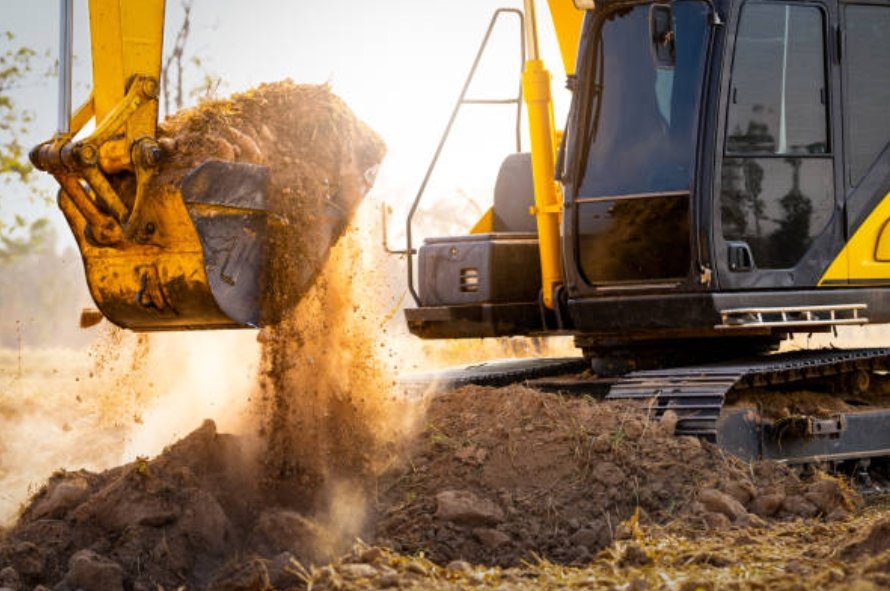Hydraulic systems are a fundamental component of modern excavators, allowing these machines to perform tasks ranging from digging and lifting to grading and demolition. These systems use pressurized fluid to create force that moves the various components of the excavator, such as the boom, arm, and bucket. This efficient and powerful mechanism is what makes excavators so versatile and capable of handling heavy-duty work.
If you’re considering excavator hire services for your next construction or landscaping project, understanding how hydraulic systems work can help you make an informed decision and ensure you’re using the equipment to its full potential.
1. The Basics of Hydraulic Power
At the heart of an excavator’s hydraulic system is the concept of fluid power. Hydraulics use pressurized fluid (usually hydraulic oil) to transmit force through pipes, valves, and cylinders. This allows the machine to perform a wide range of tasks with great precision and force. Unlike mechanical systems, which rely on gears and levers to transmit motion, hydraulic systems can transfer power efficiently over long distances with fewer moving parts.
The hydraulic system in modern excavators operates through a closed-loop circuit that includes several essential components: hydraulic pumps, cylinders, control valves, and reservoirs. These components work together to direct the flow of hydraulic fluid and convert it into mechanical force that moves the machine’s different parts.
2. Hydraulic Pumps: Powering the System
The hydraulic pump is the heart of any hydraulic system. It generates the flow of hydraulic fluid that powers the excavator’s movements. There are typically two types of pumps used in excavators: gear pumps and piston pumps. Gear pumps are more common in smaller, less demanding systems, while piston pumps are used in larger machines, where more power is required.
In modern excavators, the hydraulic pump is usually powered by the engine, so when the engine runs, the pump continuously moves hydraulic fluid under high pressure. This fluid is then directed to the hydraulic cylinders that control the boom, arm, and bucket of the excavator. The size and power of the pump determine how much pressure can be applied, directly affecting the force with which the excavator can lift, dig, or move materials.
If you are considering excavator hire services for a heavy-duty project, it’s important to choose an excavator with a sufficiently powerful hydraulic pump to meet your needs. A more powerful pump will enable the machine to handle larger, tougher tasks.
3. Hydraulic Cylinders: The Movers
Hydraulic cylinders are the components that actually execute the movements needed to carry out tasks. These cylinders contain a piston that moves back and forth inside a cylinder tube. When hydraulic fluid is directed into the cylinder, it exerts pressure on the piston, causing it to move. The piston’s movement extends or retracts the cylinder, which in turn moves the various parts of the excavator.
For instance, when an operator needs to dig, the hydraulic fluid flows into the cylinder controlling the arm, causing it to extend and lower the bucket into the ground. The same principle applies to lifting and moving materials. Each hydraulic cylinder in the excavator controls a different component: the boom, the stick (arm), the bucket, and even the rotation of the machine’s upper structure.
If you’re considering excavator hire services, be sure to assess the hydraulic cylinders’ capacity. The size and power of the cylinders determine the machine’s lifting and digging capabilities, which can vary depending on the job at hand.
4. Control Valves: Directing the Flow
The control valves in an excavator are responsible for regulating the flow of hydraulic fluid to the cylinders. The operator uses a control system, typically a joystick or lever inside the cabin, to adjust the direction and speed of the fluid, which in turn controls the movement of the excavator.
These control valves can be either manual or electronic. Modern excavators are often equipped with advanced electronic control systems that provide fine-tuned, responsive operation. This enables operators to move the boom, arm, and bucket with great precision, whether they are digging a trench, lifting a heavy load, or performing delicate demolition work.
When opting for excavator hire services, ensure that the equipment has a well-functioning control valve system. A smooth and responsive control system can significantly improve the efficiency and safety of the project.
5. Hydraulic Reservoir and Fluid
Hydraulic systems require a reservoir to store the hydraulic fluid when it’s not in use. This reservoir holds the fluid, which is drawn into the pump to be pressurized before being sent to the hydraulic cylinders. The hydraulic fluid acts as a lubricant, reducing friction and wear on the components, and also helps cool the system by dissipating heat generated during operation.
It’s essential for the hydraulic fluid to be kept clean and at the correct level to ensure the system operates efficiently. Contaminated or low fluid can cause the hydraulic system to malfunction or wear out quickly, leading to costly repairs and downtime.
When hiring an excavator, check the condition of the hydraulic fluid and ask about the maintenance schedule for the hydraulic system. Regularly changing the fluid and ensuring proper filtration can prevent damage and keep the system running smoothly.
6. Pressure Relief and Safety Mechanisms
Modern hydraulic systems are designed with safety in mind. Pressure relief valves are included in the system to protect it from overloading. If the pressure exceeds a certain limit, the relief valve opens to release the excess pressure, preventing damage to the system and ensuring safe operation.
Additionally, excavators are equipped with filters to remove contaminants from the hydraulic fluid. Keeping the fluid clean and free of debris is crucial for maintaining the longevity and performance of the hydraulic system.
If you are using excavator hire services, make sure the machine has been properly maintained, including regular checks of the hydraulic system’s pressure relief valves and filters. This will help avoid unexpected failures during your project.
Conclusion
Hydraulic systems are the key to the performance of modern excavators. They provide the power needed for digging, lifting, and material handling by using pressurized fluid to move the machine’s various components. Understanding how these systems work is crucial when selecting an excavator for your project, whether you’re digging a trench, demolishing a building, or moving large loads.
When you opt for excavator hire services, ensure the machine is well-maintained, with a robust hydraulic system that meets the demands of your work. Whether it’s choosing a powerful pump, efficient control valves, or maintaining clean hydraulic fluid, proper hydraulic system operation ensures the excavator will perform at its best, helping you complete your project on time and within budget.




